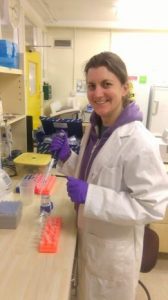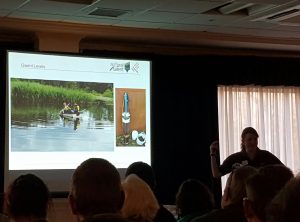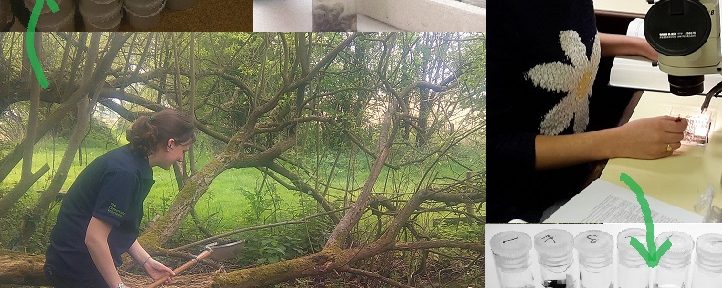
Hello again!
At the time of writing I have only one week left of my Natural Talent placement here at Amgueddfa Cymru – National Museum Wales! The past year has gone so quickly and been amazing! I still have plenty of things to finish off which is what I’ve been concentrating on this month.
Fabulous freshwater snails
One of my most challenging mollusc projects in Gwent Wildlife Trust’s “Living Landscape” areas has been on the Gwent Levels, looking at the freshwater fauna of Magor Marsh and Great Traston Meadows. With 67 samples collected across the two wetland sites, containing many different freshwater snail species, several bivalve species, as well as land snail bycatch there has been a massive amount of material to sort through and identify to species. This has been slowed by some interesting identification challenges along the way.
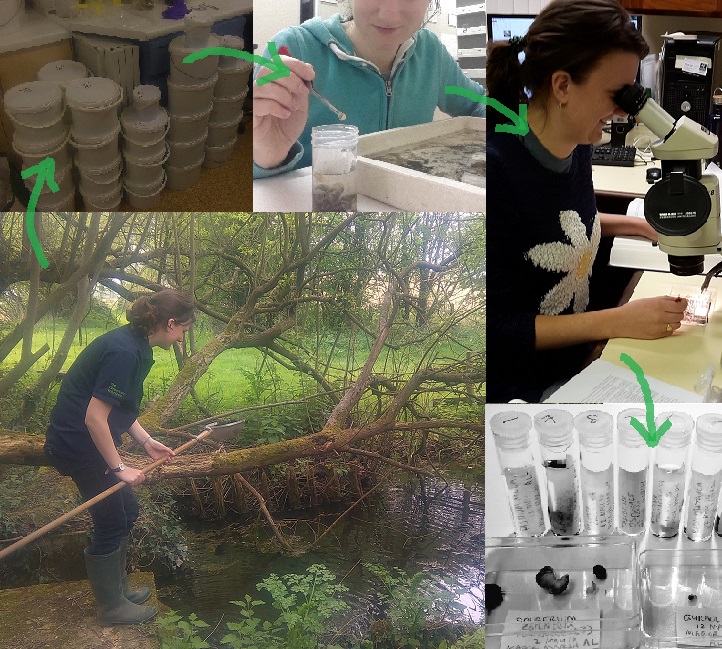
From fieldwork to museum specimen: Samples are collected in the field, transferred to and stored in alcohol, the molluscs are then picked out, identified and the data entered onto a spreadsheet. Specimens are finally stored in individual tubes for each species and location awaiting printed labels before entering the museums permanent collections and database.
Some freshwater snail species can be very variable in shell characters. One group particularly known for this in Britain are the Physidae (Bladder Snails). These are quite simple to get to genus as unusually for most freshwater snails they are left-hand whorled (sinistral). A couple of species of Physidae have been introduced to Britain from North America: Physella Acuta & Physella gyrina. luckily our native Physa fontinalis can be told apart with a bit of practice as its shells are often smaller and have a blunter spire. P.acuta & P.gyrina can have much more variable shells, so I’ve spent a lot of time checking the genitalia of specimens to make sure I’m not overlooking species.
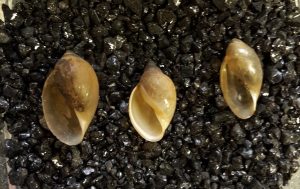
L to R: Physella gyrina, Physella acuta, Physa fontinalis. Just one example from the AC-NMW collections
Split species
Some freshwater snail species have also recently been split into two distinct species. Lymnaea palustris is one example of this. The species was commonly recorded as a single one throughout the British isles for many years, but in 2003 the species was split with Lymnaea fusca recognised in Britain. Surveys and studies have now shown that in fact the Lymnaea fusca species is far more common in Britain and Ireland than Lymnaea palustris, which is now believed to be rare occurring only in Eastern Britain! Again the shell characters are very similar and can overlap dramatically, meaning more genital dissections to check species identifications.
Learning lab work
At the beginning of the month I got to put on a white coat and gloves to spend some time in a proper laboratory! Here Ben taught me how to extract DNA from tissue so that we could send these off to be sequenced. It was a painstakingly accurate and time consuming process, but very exciting to learn! Seeing the bands on the gel light up under UV light was incredibly exciting as it showed that most of our extractions had worked!
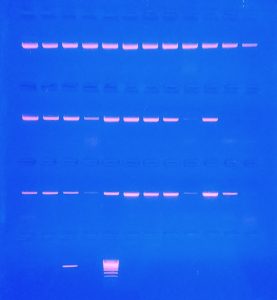
Agrose gel under UV light showing expressed DNA – the glowing bands show the ones that are successful. The biggest glowing band at the bottom middle is a positive control, to the left of it is a negative control. (40 samples incl. controls)
Deceptive DNA?
There was very few surprises in the results: what we thought species were matched the genetic sequences on the database for the same species. However, there were a couple of cases where the DNA sequences matched equally close to the two species we were trying to differentiate between, not making things instantaneously clearer. For me this reminds me to approach identifying species by DNA alone with caution, as it depends on being able to match sequences to existing sequence data. If species are incorrectly identified on the database in the first place and/or there isn’t a range of genetic data for a species it can cause more confusion. While it is a useful tool, using it alongside other traditional methods, like examining morphology to me appears a more accurate approach.
I’m hoping to make the genetic codes we sequenced available to the public, as the museum will keep the voucher specimens in their mollusc collection meaning that if species identifications or splits are questioned in the future the physical material is still there to be examined.
What a record!
On the 21st January I had one of my last events as a Natural Talent trainee, delivering a presentation about my mollusc projects at the Gwent-Glamorgan Recorders Forum organised by local records centre SEWBReC. The forum was very busy, with a record 80 attendees! It was great to hear from and meet so many enthusiastic and like-minded biological recorders, covering a vast range of different plant and animal groups.
For my last week I have data to compile, reports to write and an identification sheet to produce for the Freshwater Molluscs at Magor Marsh for Gwent Wildlife Trust.. phew! Time has slipped past far too quickly, but I’ve loved every minute.
Until next time!
Hwyl fawr am nawr!
Imogen Cavadino
Natural Talent Trainee: Non-Marine Molluscs
Don’t forget you can keep up to date with my daily antics on Twitter here or here.
A massive thank you to the Esmée Fairbairn Foundation for funding this amazing programme. Find out more about them here.
Also to Amgueddfa Cymru – National Museum Wales for hosting my placement. Be sure to drop in for a visit to the public collections when you’re in Cardiff!

